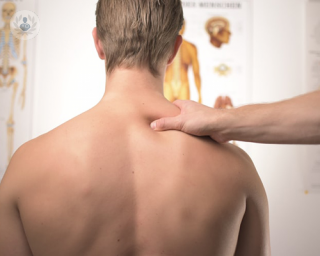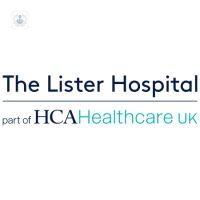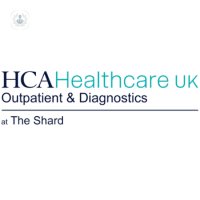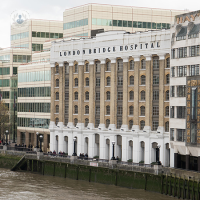Thoracic outlet syndrome (TOS)
Mr Mohamed Abdelhamid - Vascular surgery
Created on: 07-08-2020
Updated on: 03-30-2023
Edited by: Carlota Pano
What is thoracic outlet syndrome (TOS)?
Thoracic outlet syndrome (TOS) is an umbrella term for conditions that involve the compression of neurovascular structures over the thoracic area, from the lower neck to the armpit.
Each type of TOS is referred to by the structure that is being predominantly affected:
- Neurogenic (nTOS) from brachial plexus compression - the most common type of TOS. The brachial plexus is a network of nerves that sends signals to your shoulder, arm and hand from the spinal cord
- Venous (vTOS) from subclavian vein compression. The subclavian vein is one of the deep veins in your neck.
- Arterial (aTOS) from subclavian artery compression. The subclavian arteries are two major arteries in the thorax that lie beneath each clavicle (collarbone).

Prognosis
If left untreated, certain types of TOS can cause serious blood clots, nerve damage, permanent arm swelling and pain, as well as gangrene from loss of blood flow.
Symptoms of TOS
Symptoms can vary depending on the type of TOS. They can also vary between individuals and be intermittent.
Symptoms of neurogenic (nTOS) from brachial plexus compression may include:
Symptoms of venous (vTOS) from subclavian vein compression may include:
- Hand or arm pain
- Cyanosis (a bluish or purplish skin discolouration)
- Swelling of the arm on the affected side
- An increased risk of thrombosis in the affected arm
Symptoms of arterial (aTOS) from subclavian artery compression may include:
- Mild arm ache
- Arm fatigue
- Pain
- Pallor (an unhealthy, pale-looking appearance)
- Feeling cold
- Decrease of blood pressure in the arm
Medical tests to diagnose thoracic outlet syndrome
To exclude other possible conditions with overlapping symptoms and diagnose TOS, you may have an electromyography and imaging scans, such as a chest x-ray or MRI (magnetic resonance imaging).
You may also have:
- CT (CAT) scan or MRI of the spine
- An ultrasound
- Cervical spine x-ray
- Blood tests
- Vascular studies (an examination of the arteries and veins)
- Nerve conduction studies
What are the causes?
- Traumatic injury
- Tumours
- A cervical rib
- Repetitive motions of the area with raised arms, such as in swimming, tennis, throwing, and carrying heavy objects over your head
- Obesity
Can it be prevented?
Many cases of TOS cannot be prevented.
Treatments for thoracic outlet syndrome
Treatment depends on which structure is being compressed and the severity of the symptoms.
Neurogenic (nTOS) from brachial plexus compression:
- Medications (e.g. pain relief, muscle relaxants)
- Physical therapy
- Surgery (if previous measures haven’t been effective).
Venous (vTOS) from subclavian vein compression:
- Medications. For example, thrombolytic medication to dissolve blood clots, and anticoagulants (also known as blood thinners) which prevent clots).
- Surgery
Arterial (aTOS) from subclavian artery compression:
- Thrombolytic medication
- Surgery
If surgery is necessary, you’ll be advised to avoid heavy lifting for some time, and may receive physiotherapy.
Which type of specialist treats thoracic outlet syndrome?
If arteries and veins are affected, a vascular surgeon is the trained specialist who can surgically treat TOS. A thoracic surgeon, an expert in the chest, may also be required. If the nerves are affected, you may require a neurologist.








